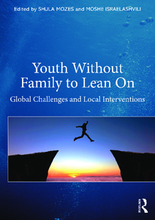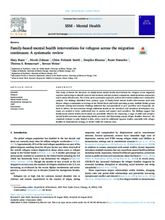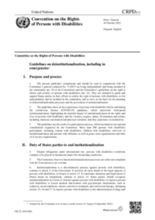Displaying 651 - 660 of 4401
The Covid-19 pandemic may have fueled higher levels of maternal and child mortality in more than a dozen of the world’s poorest countries by causing women and children to skip health care visits, according to a new study.
This book 'Youth Without Family to Lean On' draws together interdisciplinary, global perspectives to provide a comprehensive review of the characteristics, dynamics, and development of youth (aged 15–25) who have no family to lean on, either practically or psychologically.
The webinar will explore participation in foster care with particular focus on individual decision making for children and young people. We will be hearing from people with lived experience of foster care in different contexts.
International Labour Organisation (ILO) estimates suggest that 50 million people - or one out of every 150 people alive - are trapped in forced labour or forced marriages. That is up nearly 10 million on its numbers from five years ago.
The Alliance for Child Protection in Humanitarian Action CPMS Working Group held an interactive webinar to support members in engaging and completing the recently distributed Self-Assessment Process for the Child Protection Minimum Standards
This global study reviewed the literature on family-based mental health interventions for refugees across migration contexts and settings to identify types of interventions and intervention components, implementation approaches and to assess effectiveness. The review used a systematic approach, and ten intervention studies were retained for analysis.
These guidelines complement the Committee’s General Comment No. 5 (2017) and its guidelines on the right to liberty and security of persons with disabilities. They are intended to guide and support States parties, in their efforts to realize the right of persons with disabilities to live independently and be included in the community, and to be the basis for planning deinstitutionalization processes and prevention of institutionalization.
More than 10.5 million children have lost one or both parents during the coronavirus pandemic — nearly double the previous estimates — according to data released Tuesday. Southeast Asia and Africa suffered the greatest rate of losses, with one out of every 50 children affected compared with one out of 150 children in the Americas, according to the research letter published in JAMA Pediatrics.
Global totals and country comparisons were previously hampered by inconsistencies in COVID-19 testing and incomplete death reporting. The new orphanhood estimates derived here based on excess deaths provide a comprehensive measure of COVID-19’s longterm impact on orphanhood and caregiver loss.
This is the CRC Committee’s report to the 77th session of the UN General Assembly which includes a section on the Day of General Discussion (DGD) on children’s rights and alternative care and the recommendations emanating from that process





